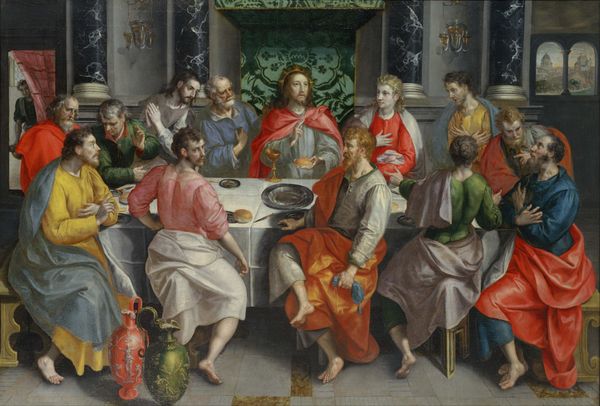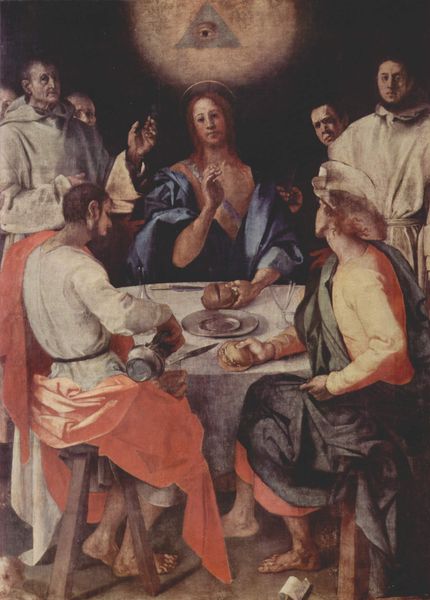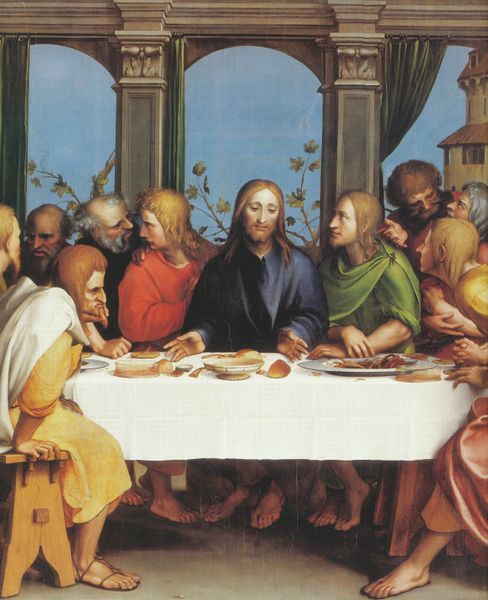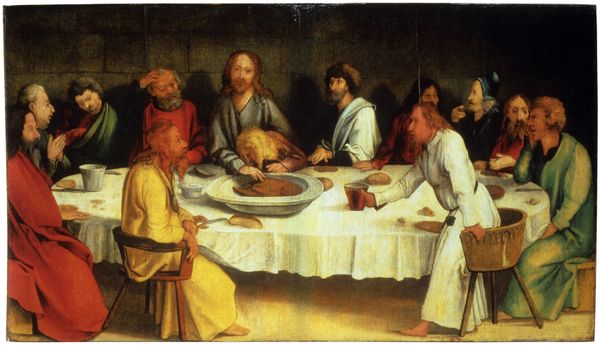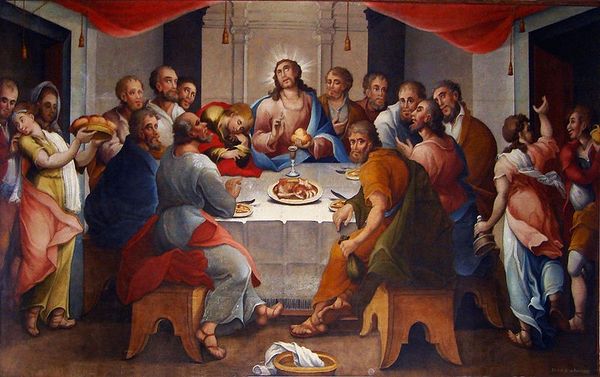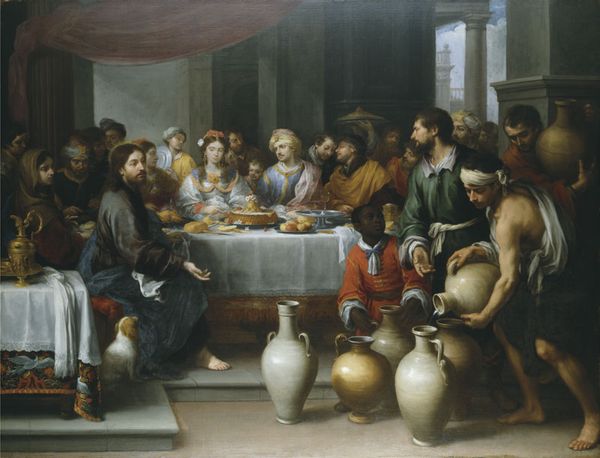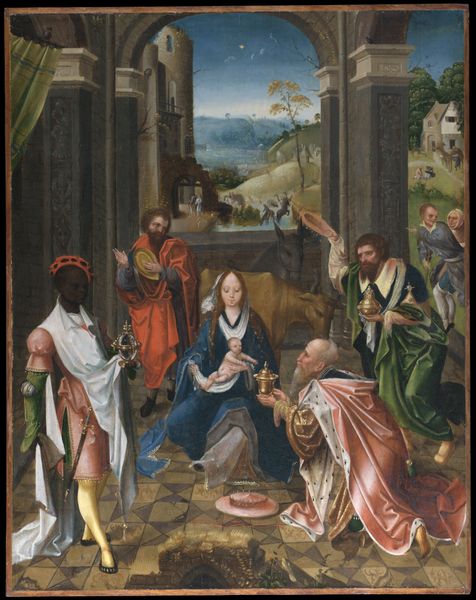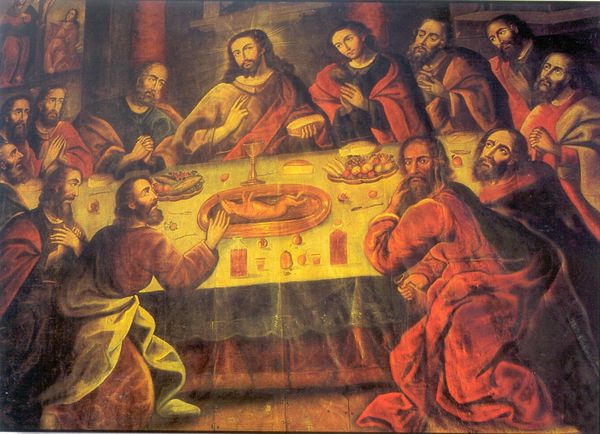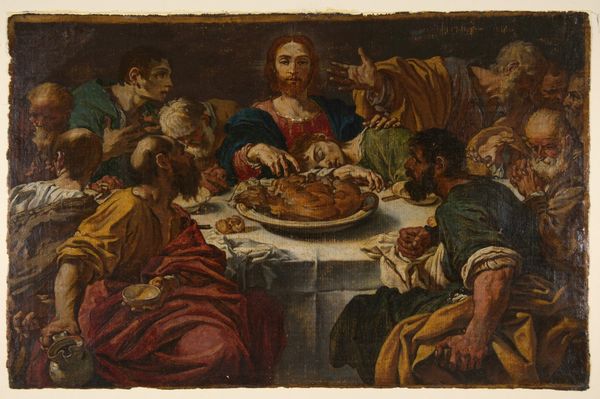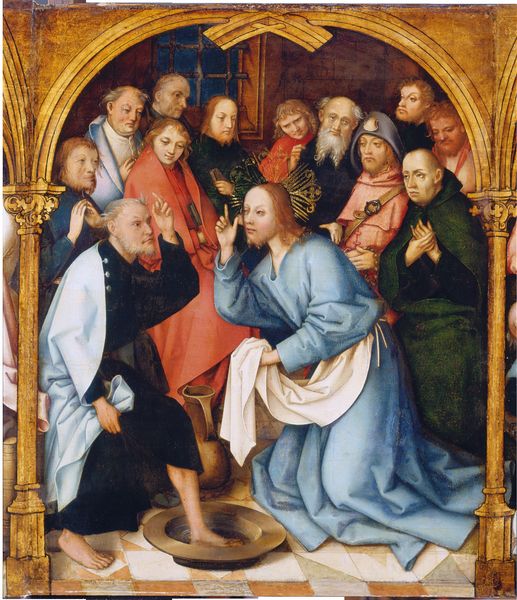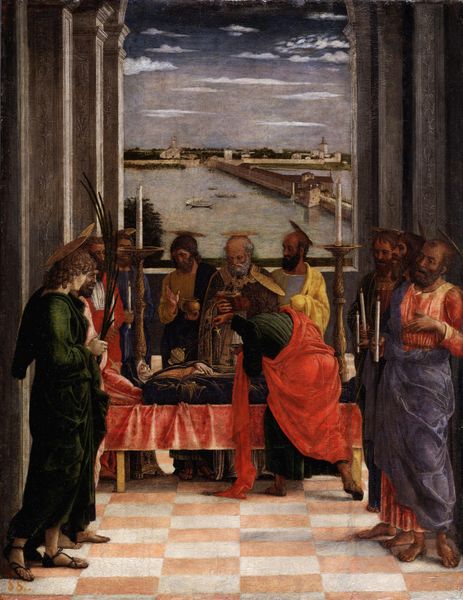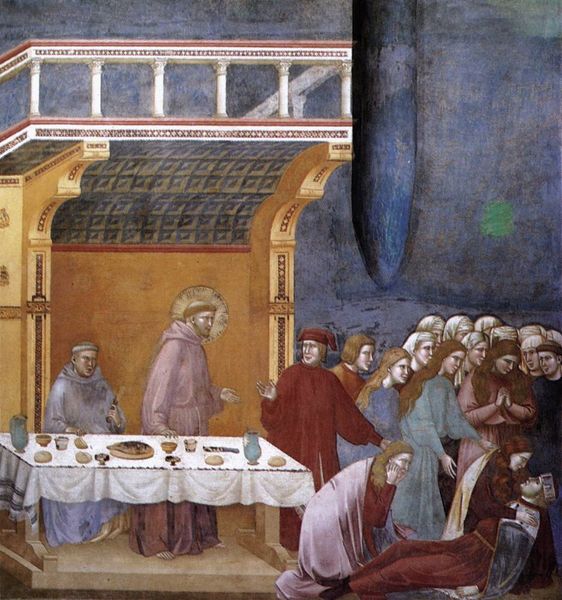
oil-paint
#
portrait
#
oil-paint
#
figuration
#
11_renaissance
#
oil painting
#
group-portraits
#
13_16th-century
#
genre-painting
#
history-painting
#
portrait art
#
fine art portrait
Dimensions: 64.5 x 267.1 cm
Copyright: Public Domain
Hans Holbein the Elder created this 'Last Supper' panel painting with oil on wood in the early sixteenth century. The decision to depict this important moment using oil paint, a relatively new medium at the time, shows Holbein's awareness of cutting-edge techniques. Oil allowed for richer colors, smoother gradations, and a greater level of detail than traditional tempera paint. Look closely, and you'll see how he uses these qualities to create a sense of realism and depth, from the texture of the tablecloth to the expressions on the faces of the apostles. The process of building up layers of oil paint would have been time-consuming, requiring skill and patience. This reflects the value placed on craftsmanship in the Renaissance period, where technical mastery was seen as a sign of artistic excellence. But the painting is not just about technical skill; it also conveys deep emotions through the careful arrangement of figures and the use of color and light, something that might seem contrary to the heavy emphasis on craft. The fact that Holbein chose to work on a wooden panel is also significant. Wood was a common support for paintings in Northern Europe, and its smooth surface would have allowed him to achieve the fine level of detail that characterizes his style. Ultimately, the meaning of 'The Last Supper' is inseparable from the materials and methods used to create it. By understanding the how of its making, we can appreciate the what all the more fully, which breaks down the traditional separation of art and craft.
Comments
Join the conversation
Join millions of artists and users on Artera today and experience the ultimate creative platform.

